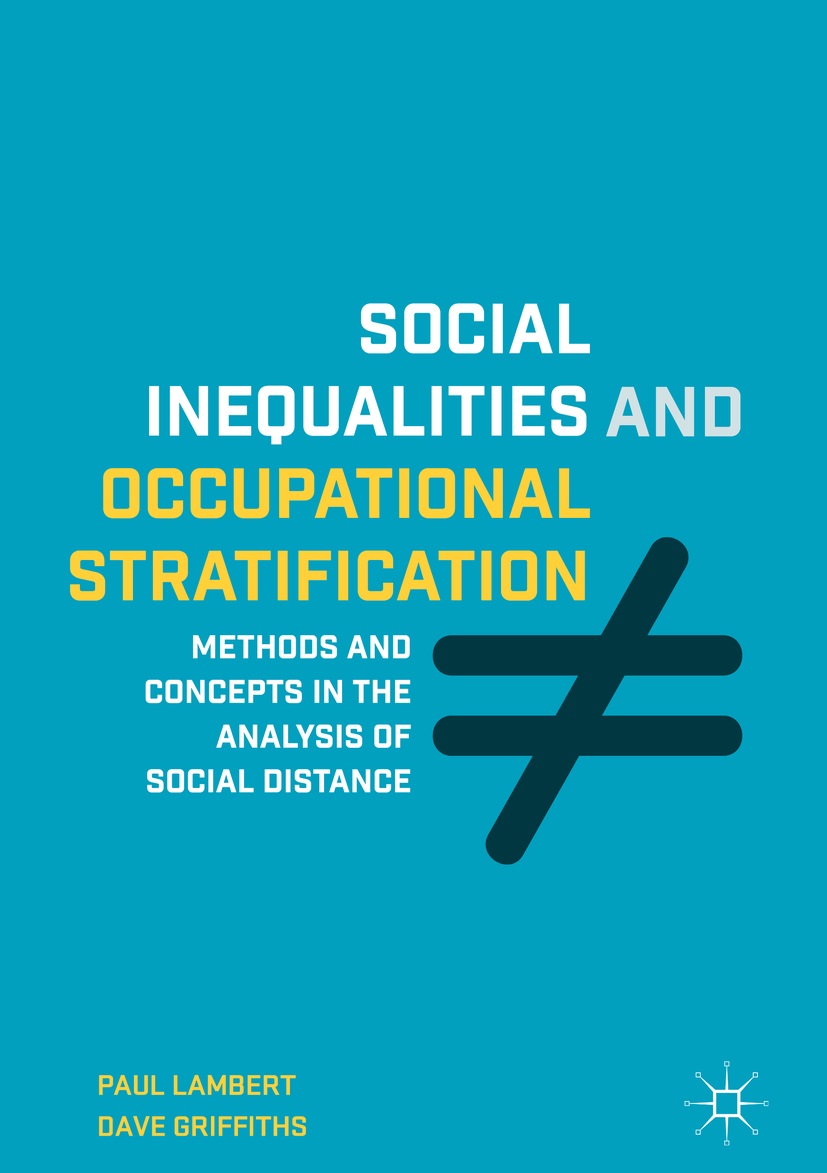Lambert, P. S., & Griffiths, D. (2018). Social Inequalities and Occupational Stratification: Methods and Concepts in the Analysis of Social Distance. Basingstoke: Palgrave |
 |
| INTRODUCTION | BIBLIOGRAPHIC REVIEW | SCALE CONSTRUCTION |
Appendix and downloadable materials for Lambert & Griffiths 2018
Lambert, P. S., & Griffiths, D. (2018). Social Inequalities and Occupational Stratification: Methods and Concepts in the Analysis of Social Distance. Basingstoke: Palgrave |
 |
The above monograph from 2018 seeks to summarise the CAMSIS approach as well as to discuss its relationship to other aspects of the analysis of social distance. This page features some links to downloadable materials that are highlighted in the book. Interested readers are very welcome to make contact directly with the authors (Paul Lambert and Dave Griffiths)
Pages/resources mentioned in the book:
1) Worked examples for deriving CAMSIS scales
On page 140, and page 173, in Chapter 6, the book mentions that downloadable files are available showing illustrations of software code being used to derive CAMSIS scales using Stata, SPSS, lEM and R. All of these are available via links on the SCALE CONSTRUCTION section of the CAMSIS website.
On page 179, in Chapter 6, we mention macros in Stata format that can be used as automatic or semi-automatic procedures for generating CAMSIS scales given suitable access to data. These are available on the CAMSIS project website under a page called 'make_CAMSIS: A resource for deriving CAMSIS measures with Stata'
Chapter 6 of Lambert and Griffiths 2018 features an extended illustration of the derivation of a CAMSIS scale for Portugal in 2011. The files involved are also documented on the CAMSIS project's VERSIONS page, specifically on the page for Portugal. Key files that readers are particularly likely to be interested in accessing are:
index file for the scales Stata MS Excel plain text 'do file' showing derivation (figure 6.1) pt2011isco08_3 .dta .xls .dat template_analysis_pt2011.do More on the scale for Portugal in 2011 metadata used in the scale (ISCO-08 labels) The application described in the book relies upon access to microdata from the IPUMS-I project
isco08_labels_2.do
2) Worked examples in using network analysis tools
The work described in Chapters 7 and 8 originates in the ESRC-funded project 'Social Networks and Occupational Connections' ('SONOCS'), for which a variety of other materials, including illustrative analytical examples, are available from that project's website .
Specifically, on page 243, in Chapter 8, the book mentions that files are available in Stata, R and Pajek that illustrate examples of analysis of data on social interactions between occupations, through the tools of network analysis. These files can be found on the SONOCS project webpages, in the 'Resources' subsection.
Template file showing identification and analysis of 'networked occupations' in Stata: template_sna_pt2011.do